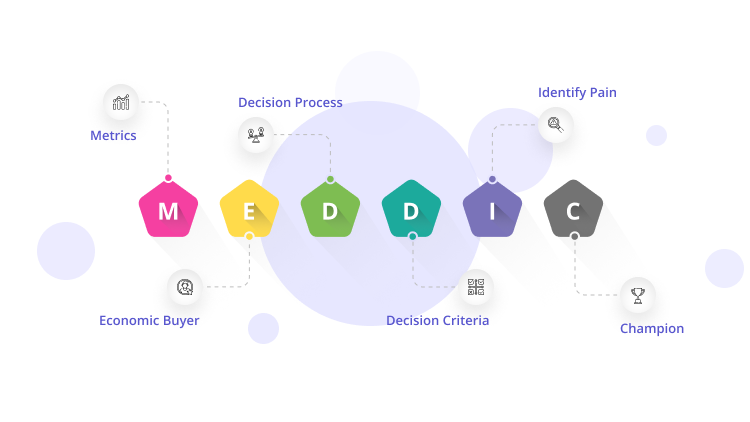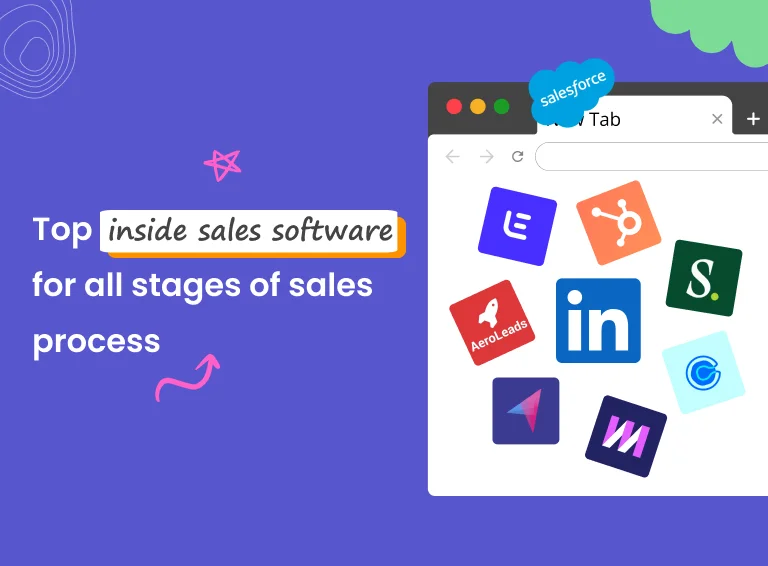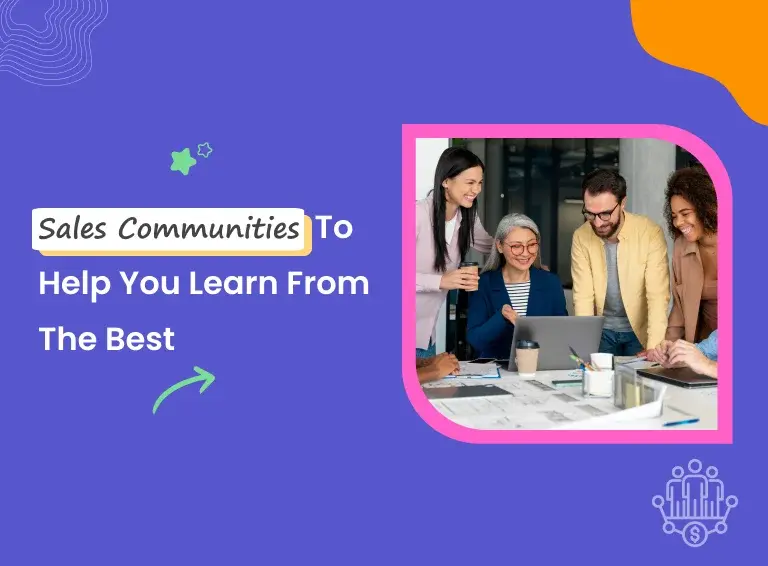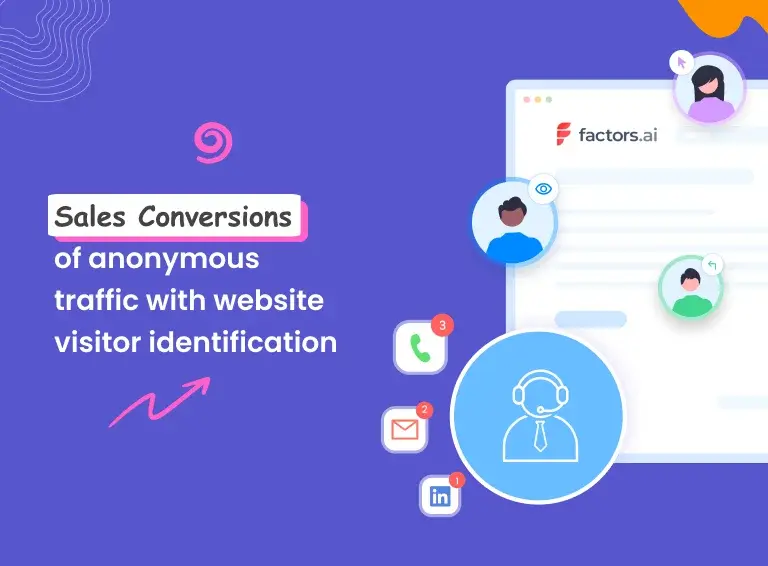What’s common between shoppers longingly staring at storefront windows and those signing up for multiple demos and trials?
An audience that will ooh and aah, but never loosen their purse strings.
So, how can you find prospects who are more likely to buy from you?
Sales reps have over the years pondered over this very question and developed several methods to separate the wheat from the chaff through sales qualification processes. From these efforts, methodologies like BANT, MEDDICC, CHAMP or MEDDPICC were born. These lead qualification frameworks ensure that you’re contacting and selling to the prospects who are more likely to convert.
Picking and priming the right buyers may seem like mayhem, but sales qualification techniques like MEDDIC lend a little bit of method to this madness and help you close deals at a faster pace.
Read on to find out how you, too, can qualify your leads using MEDDIC, and learn about the updates made to the framework that makes it a formidable tool in today’s selling environment.
What Is MEDDIC?
MEDDIC is a sales qualification methodology used in B2B sales to weed out stubborn cold leads from genuine prospects. The acronym MEDDIC stands for Metrics, Economic Buyer, Decision criteria, Decision Process, Implication of Pain and Champion.
MEDDIC is based on the sales methodology that–
- a sales rep must first understand their pain point,
- learn about the metrics that matter to the prospect,
- and use these numbers to highlight the pain points for the prospect.
- Apart from this, the sales rep also has to find a champion for your product on the prospect’s side.
In order to execute this strategy, use MEDDIC to frame questions that uncover the above-mentioned information and other bits of info that they could use to qualify the prospect further.
Here’s how to apply it
Frame questions for each criteria and pose them to prospects in the early stages of the sales process (during the prospecting and discovery stages). You will get to know your prospect’s budget, identify key stakeholders, uncover pain points, priorities and even find champions of your product. And use that data to close deals faster or chuck leads out of your pipeline or even nurture them some more.
A little about MEDDIC’s founding fathers
This sales qualification framework was developed in 1996 by Dick Dunkel and Jack Napoli under the guidance of John McMahon, Sales lead of the Parametric Technology Corporation (PTC). It helped PTC meet its goals consecutively for 10 years while raking up a whopping $10 billion in revenue.

Why MEDDIC?
Well, the better qualified your prospects are, the lesser surprise deal drop-offs you’ll get when the quarter nears its end. Here are some reasons why you should choose MEDDIC.
Easier adoption among sales reps: MEDDIC is a simple yet effective sales qualification method. It doesn’t require any extensive sales training and hence, even the green sales reps can master it.
Standardized qualification process: Adopting MEDDIC ensures that every sales rep is following a methodical approach to asking qualifying questions–which results in a standardized qualification process. So you know that all the reps are qualifying all the leads in the best way possible.
Easier to weed out prospects: If you know the prospect’s buying criteria beforehand, you’d know how to approach them during later sales conversations, and it’ll help you weed out prospects who you know won’t be able to buy from you.
6 Steps of MEDDIC Sales Methodology
Here are the 6 bits of information you can learn about the prospect using the MEDDIC sales qualification framework:
Metrics
At the metrics stage, a salesperson conducts a discovery call to understand the buyer’s expectations in quantifiable terms. Such interactions are characterized by questions designed to draw out the exact percentage points, volumes, and numbers by which they wish to improve their metrics –
- How much do you aim to cut down on production costs?
- What are your future projections for increasing your output?
- How much in sales revenue do you hope to hit by the next quarter?
- Are you seeking to reduce the costs of customer acquisition by 20%?
- What are the close rates you’re going after with your current strategy?
Based on answers derived from this call, the sales person can work on offering the best possible return on investment (ROI) to the buyer with their product. They work out why and how their offering can bring economic benefit to the buyer. This questionnaire helps personalize future sales efforts for each individual prospect.
This way, without even pitching a solution, the first step in qualifying the buyer is taken.
Pro Tip: Build discovery call templates in your CRM to make it easy for new sales reps to follow the MEDDIC process. The checklist ensures that sales reps get the desired information even when the potential customers are reluctant to open up or meander a lot.
Economic Buyer
This step involves identifying the person who takes the final decision.
Sales teams may take some time to understand the dynamics of the prospective buying organization. In the interest of ramping up their sales cycle, it is imperative that they aren’t wasting time dealing with anyone other than the designated decision-maker.
The economic buyer persona may be difficult to track down, so it is important to find them by asking the right questions.
“If you decide to proceed, who will sign off on it?”
“How does your organization typically make buying decisions?”
“Is anyone else involved in the buying process?”
“What’s your role in the decision-making process?”
Such lines of questioning can reveal the key stakeholders of the company. The next step is to warm up the economic buyer and view your product offering from their lens. The objective is to gauge whether a cost-benefit analysis of your product works in their favour.
Research your economic buyer or talk with them directly to have a thorough understanding of:
- Their expectation from your product in terms of productivity, economic benefit etc.
- Decision-making process
- Factors to consider before authorizing spend on your offering like the paper process involved etc.
- Personal metrics , for instance incorporating your product to achieve certain metrics would ultimately lead to their promotion or pay raise
Decision Criteria
Based on what parameters does the buyer make purchasing decisions? Each buyer is courted by a number of sellers competing for their business – all trying to find the answer to that one question.
Decoding the buyer’s decision criteria helps sellers in tailoring their sales strategies and messaging, thereby increasing the chances of bagging a contract. MEDDIC sales process allows sales professionals to assess the usual suspects typically on buyers’ criteria – their budget, projected ROI, ease of use, onboarding process and integration compatibility.
Typically, decision criteria are divided into technical, business/financial, and relationship criteria. Here are some of the types of questions sellers should ask themselves for a lowdown on each of these –
Technical criteria
- Can the product be easily integrated into the prospective buyer’s systems?
- How many training sessions will go into learning to use the product?
Business/financial criteria
- Does the product fit the dispensable budget or funds earmarked for products like yours?
- How does the product set you apart from prior solutions or alternative products in terms of ROI?
- What is the formal workflow or approval process?
Relationship criteria
- Does the buyer trust you enough to buy the product?
- Does your product align with your buyer’s immediate and long-term goals?
Often, smaller companies may not have a formal document for criteria they consider crucial to their decision-making process. In fact, some may not have a deep understanding of what it is that they need exactly. So, this step in the MEDDIC sales process persuades them to organize and articulate their own needs while giving sellers an opportunity to show buyers that they can check each criterion on their list.
Decision Process
After looking into the “what” of decision-making, salespeople must also spend time getting to know the “how” of it.
Basically, one can divide the decision process into validation and authorization. The buyer will internally hold several rounds of investigation to validate your product. They try to understand if it lives up to promises made by you.
During the buying process, the prospects will try to justify:
- The need for your product
- The need to do it now
- Why should they choose you
To increase your chances of authorization, you should have a clear idea about the timeframes and paperwork that go into the prospect’s decision-making process to avoid unnecessary delays. Your point of contact in the company is the best person to address any queries about the process like:
- What are the processes you carry out before authorization?
- What is the approximate time you take to carry out the decision process?
- By when can you start the paperwork?
- What type of paperwork do you need?
- Who is responsible for finalizing the decision?
Your goal should be to know their buying process inside out so that you can do everything in your power to be confirmed as the vendor of choice (VOC).
Identify Pain
You can’t be firefighting where there are no flames.
You will have done some research about the prospect. So, When you start talking to them, dig deep to understand better on how your product alleviates their pain points.
How do you do it?
Identifying customer pain points is like detective work and a doctor’s diagnosis rolled into one. You ask questions during your investigation and then determine the problem. The most insightful diagnosis comes from a combination of product knowledge and customer knowledge.
Here are some of the questions you can ask your prospect to identify their pain points:
- What are your future expectations and what is holding you back?
- Who benefits most when you remove all these problems?
- Is your company suffering financially because of these problems?
- Have you tried any other solution? Why did they not work for you?
- If you have a limitless budget, what problems would you solve on priority?
- What is your customer journey like?
Knowing a prospect’s pain points empowers you. You can change your sales pitch to speak in their language, keeping their problems centre stage. It helps you better articulate the solution you bring for the benefit of your prospective buyer.
As we already established, metrics offer the clearest picture of the buyer’s priorities, woes and strengths. During their questioning, sales teams must be prepared to follow up on vague declarations like “our website traffic is hit” with pointed queries into abandonment rates, conversion rates and trends showing a decline in the number of hits.
Sales reps can then highlight aspects of their solution that specifically target these pain points. For instance, if the lead complains about higher customer acquisition costs, the sales professional can draw focus to the scale, speed, and efficiency with which their product performs at a price that significantly cuts costs in the long run. Sales reps must also understand the difference between an actual pain point, and a weak one with eagle-eyed precision. Weaker pain points are usually kept on the back burner and as a result, may be saddled with budget restraints and excessive delays.
Champion
Champions are influential people within the prospect’s organization who can act as the spokesperson for your product. They could be your point of contact or perhaps someone who stands to gain the most out of your solution. Even if they’re not the designated decision-maker, they have plenty of sway in the organization.
Here’s How To Identify a Champion
- Does your champion of choice have power and influence?
- Are they willing to bring up your product during internal meetings?
- Does your champion’s goals align with yours?
Now, you have to test your champion by asking the following:
- Can you show me what the next steps are from here? (The person is a champion if they’re letting you in on what goes on behind the scenes.)
- Do you know who was the most intrigued by the presentation? (The person is a champion if they offer inside information. They aren’t if they give a generic answer like, “oh, we involve everyone.”)
- Would you be able to set up a meeting with the economic buyer mid this week to discuss the doubts they had raised during the demo? (The person is a champion if they’re willing to influence decision-makers for you.)
A champion can
- Sell your product to the right people in their company
- Give you a clear, transparent peek into the organization
- Offer expertise to give incisive advice on your product
- Command the respect of stakeholders.
Conclusion
MEDDIC framework gives sales professionals incredible flexibility to address sales qualification challenges unique to each prospect without taking their eyes off the ball.
By educating sales reps about MEDDIC, sales managers can –
- Create a common language in which all their client-facing professionals work
- Discipline their processes and assess their own approaches
- Have a highly qualified sales pipeline
- Shorten and standardize their sales cycles
- Ultimately, increase close rates and return on investment through accurate insights and predictions.
FAQs
What is the difference between MEDDIC and MEDDPICC?
What is a MEDDIC score?
What are MEDDPICC metrics?
Metrics- It refers to the economic goals of the target company in quantifiable terms.
Economic buyer- The economic buyer is that one person who makes the final decision about your product in your target company.
Decision criteria- The buyers’ criteria involve their budget, projected ROI, ease of use, and integration compatibility.
Decision process- It refers to the buying process and time required to sign and onboard your customer.
Paper process- It refers to the paperwork involved in signing a deal.
Implication of pain- The pain points, needs, or challenges of your prospects.
Champion- Champions are influential people within the organization who have a personal stake in the solution you offer.
Competition- Competition refers to other vendors, an in-house team, or inaction from your prospect.





